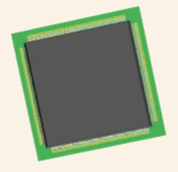EP2C5Q208C8N FPGAs: Features, Applications and Datasheet
2025-07-10 09:57:25 1514
EP2C5Q208C8N Description
The EP2C5Q208C8N is a low-cost, low-power FPGA from Altera’s Cyclone II family. It integrates 5,280 logic elements, embedded memory, and multiple I/O options in a 208-pin QFP package. Designed for cost-sensitive applications, it balances performance and affordability for embedded and industrial use cases.
EP2C5Q208C8N Features
5,280 logic elements (LEs)
Approximately 119 Kbits of embedded M4K RAM
Up to 136 user I/Os
208-pin Plastic Quad Flat Pack (Q208) package
Speed grade: C8 (commercial temperature, slower speed)
Supports JTAG and Passive Serial (PS) configuration
Core voltage: 1.2V; I/O supports 1.5V, 1.8V, 2.5V, and 3.3V
2 on-chip PLLs for flexible clock management
Low static power consumption
EP2C5Q208C8N Applications
Industrial automation and control
Communication bridges and protocol converters
Entry-level FPGA development and training kits
Consumer electronics products
Simple data acquisition and processing systems
Video signal interfacing and timing control
Legacy 5V-tolerant systems
EP2C5Q208C8N Alternatives
EP2C8Q208C8N (Cyclone II, higher logic capacity)
EP3C5E144C8N (Cyclone III, newer gen, similar logic size)
XC3S400-4PQ208C (Xilinx Spartan-3, similar package and density)
LFE2-12E-5QN208C (LatticeECP2, larger logic capacity in same package)
EP2C5Q208C8N CAD Model
Symbol

Footprint

3D Model


EP2C5Q208C8N Manufacturer
Intel Corporation is a leading multinational technology company headquartered in Santa Clara, California, USA. Founded in 1968 by Robert Noyce and Gordon Moore, Intel is best known for designing and manufacturing semiconductors, particularly microprocessors used in most of the world's personal computers.
Intel was the inventor of the x86 series of microprocessors, which has become the foundation of most modern CPUs for desktops, laptops, and servers. Over the decades, Intel has expanded its technology portfolio to include chipsets, integrated graphics, solid-state drives (SSDs), network interface controllers, field-programmable gate arrays (FPGAs), AI accelerators, and advanced system-on-chip (SoC) solutions.
The company has played a pivotal role in shaping the PC revolution, and today it remains a dominant force in areas such as cloud computing, data centers, 5G infrastructure, autonomous driving, and artificial intelligence. Intel is also investing heavily in foundry services, offering advanced semiconductor manufacturing capabilities to external customers.
With a global workforce and manufacturing sites across the United States, Europe, and Asia, Intel continues to drive innovation in computing and connectivity, aiming to deliver world-changing technology that enriches the lives of every person on Earth.
EP2C5Q208C8N FAQs
What is the configuration method for the EP2C5Q208C8N?
It supports both JTAG and Passive Serial (PS) configuration using external devices like EPCS4 or USB Blaster.
How much internal memory does it provide?
The device includes approximately 119 Kbits of embedded M4K RAM blocks.
Does it support PLLs for clock generation?
Yes, it features 2 PLLs for clock management, including multiplication, division, and phase shifting.
What I/O voltage levels are supported?
It supports 3.3V, 2.5V, 1.8V, and 1.5V I/O standards such as LVTTL and LVCMOS.
Is it suitable for portable or low-power applications?
Yes, its low static and dynamic power characteristics make it ideal for compact, energy-efficient designs.




